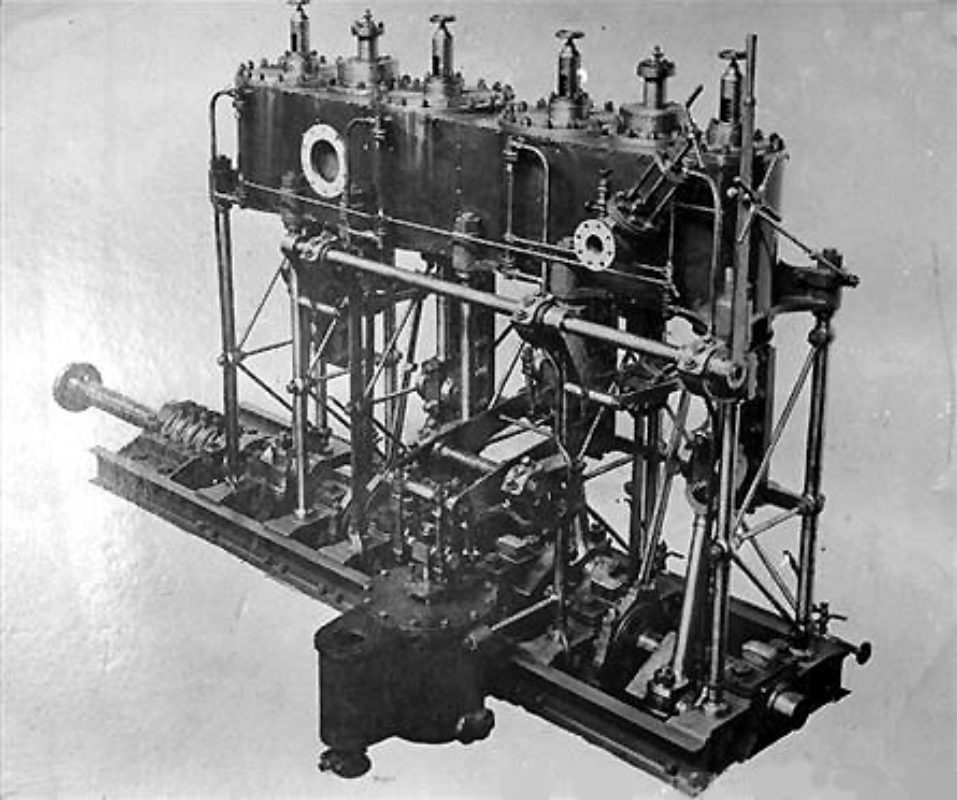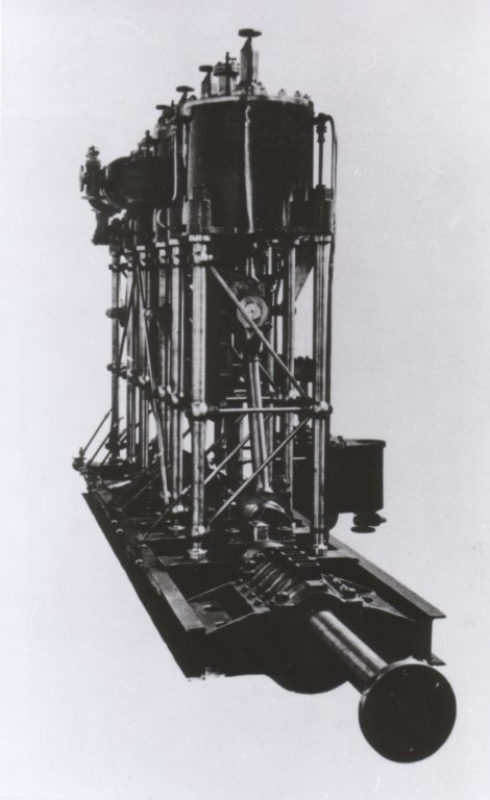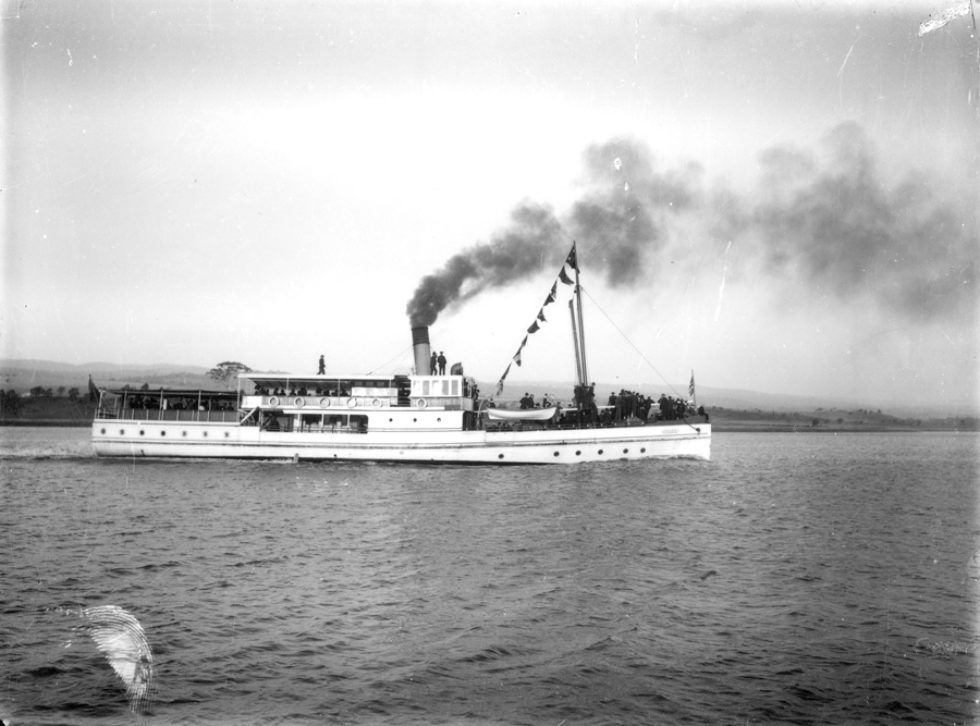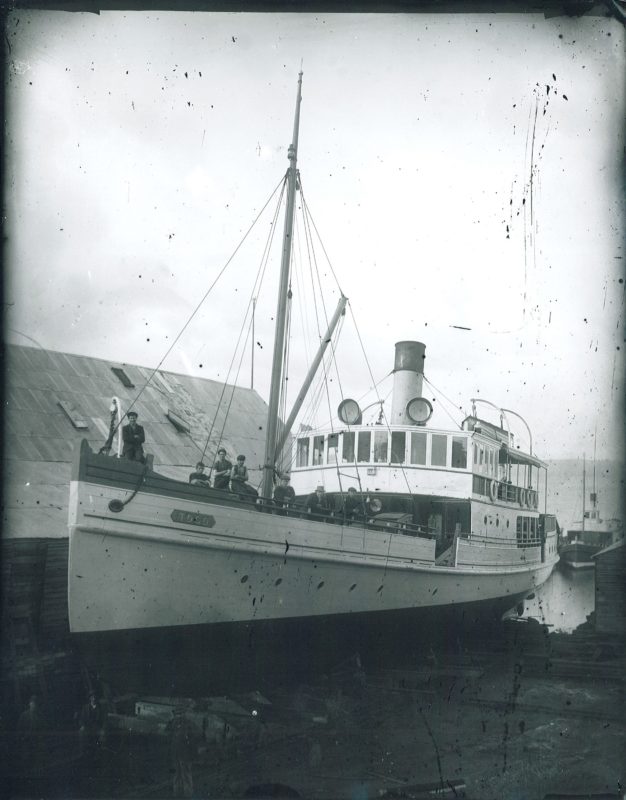Our History
The S.S Togo
In 1905 Glasgow Engineering built the 400 hp Triple Expansion Steam Engine for the river ferry Togo. A lathe was ordered from England to complete the contract because one with enough capacity to machine the large low-pressure cylinder was not available.Unfortunately it did not arrive in time and they were forced to manufacture two low-pressure cylinders to the same capacity making it a four-cylinder triple expansion engine. The S.S Togo was commissioned in 1906 and became a familiar sight on the Tamar River. She was considered to be the aristocrat of Tasmania’s river steamers and was believed to be the fastest in Australia, with a top speed of 17 ¼ knots. On the evening of April 2 1907 she was involved in a collision opposite Barnards Creek with the pleasure steamer Alice part owned by the Salisbury Foundry Company. Ten people lost their lives including J.T. McDonald of the Salisbury Foundry Company who was at the helm at the time. At the outbreak of World War 1 she was requisitioned for patrol duty as a mine sweeper and was renamed the H M A S Philip. In 1920, James Rowe & son of Hobart bought her from the commonwealth government for £3500, renamed her Togo and ran excursion trips on the River Derwent. Again on Christmas Day 1926 the Togo was involved in another collision with the Cartela while racing on the Derwent River, fortunately no one was injured. In 1930 her boiler was condemned and attempts were made to restore her. The commonwealth Government took her over again during World War 11 but she was not commissioned for any active war service work. After the war she was offered for sale and bought by Captain Sculthorpe who in turn sold her to H Dodge of Risdon, the supervisor of the ships grave yard at Mt. Direction. He gutted her and sold her engines to Japan as scrap.



An excerpt from the Examiner Friday 17 November 1905:
NEW RIVER STEAMER Togo SUCCESSFULLY LAUNCHED.
The hull of the new river steamer constructed by Air. Fred. Moore to the order of Mr. Robert Gardner was successfully launched from the marine board's Patterson-street yards yesterday afternoon. A large crowd of spectators assembled, amongst them being many prominent citizens. All preparations were completed shortly before 4 o'clock, and at that hour the blocks were knocked away, and the screw-jack applied to give the vessel a start. As she moved off Mrs. Paterson, who performed the christening ceremony when the S.S Agnes was launched, broke a bottle of Champagne over the bows of the new vessel, and named her the Togo, after the Japanese admiral. Gradually gathering impetus, the hull glided smoothly down the well-greased ways and in a few seconds was floating gracefully on the river. As the vessel took the water, cheers were given, and Mr. Moore was heartily congratulated on the successful launch, as was also Mr. Robert Gardner. The S.S Agnes , which was in attendance, took the Togo in tow, and brought her alongside the wharf, where the engines are to be installed. As already stated, the Togo has been built for the river service, and the requirements of that trade were steadily considered when the design was prepared. The keel was laid about five months ago, and through the early stages of the construction the contractor was hampered by delay in obtaining the necessary timber. Mr. Moore has nevertheless succeeded in launching the vessel within a month of the period stipulated in the contract. Her dimensions are: Length, 130 ft.: breadth, 22 ft. 2 in. depth, 9 ft. 2 in. The hull timbers are of spotted gum, and the planking is composed of kauri pine. The engines are of triple expansion type, with four cylinders, designed for an indicated horse power of 400. These have been constructed at the works of the Glasgow Engineering Company from designs by Mr. Bogle, engineer manager. The cylinders are 12 1/4 in. high pressure, intermediate 19 in and two low-pressure, each 22 in., all having a stroke of 18 in. The condenser is separately constructed of wrought steel plates, with a cooling surface of 675 ft., the circulating water being supplied by a small centrifugal pump, driven by a vertical direct-acting engine. This engine is also used to drive a fan for promoting a mild form of forced draught. The boiler is of the water-tube type, and is being supplied by the patentees Messrs. Fleming and Ferguson, of Glasgow. It is daily expected to arrive at Hobart by the Barque Ariel. The working pressure is 180 lb. per square inch. We have had the pleasure of inspecting the engines, which are pronounced by those competent to judge as being specimens of the highest class of marine engine work. As regards the rate of speed expected, opinions differ. That cannot be decided until after a trial, but expectations vary from 14 to 16 knots as probable. To anyone viewing the vessel with her beautiful lines, and the care taken with the machinery, there can be no doubt as to a satisfactory result.


































